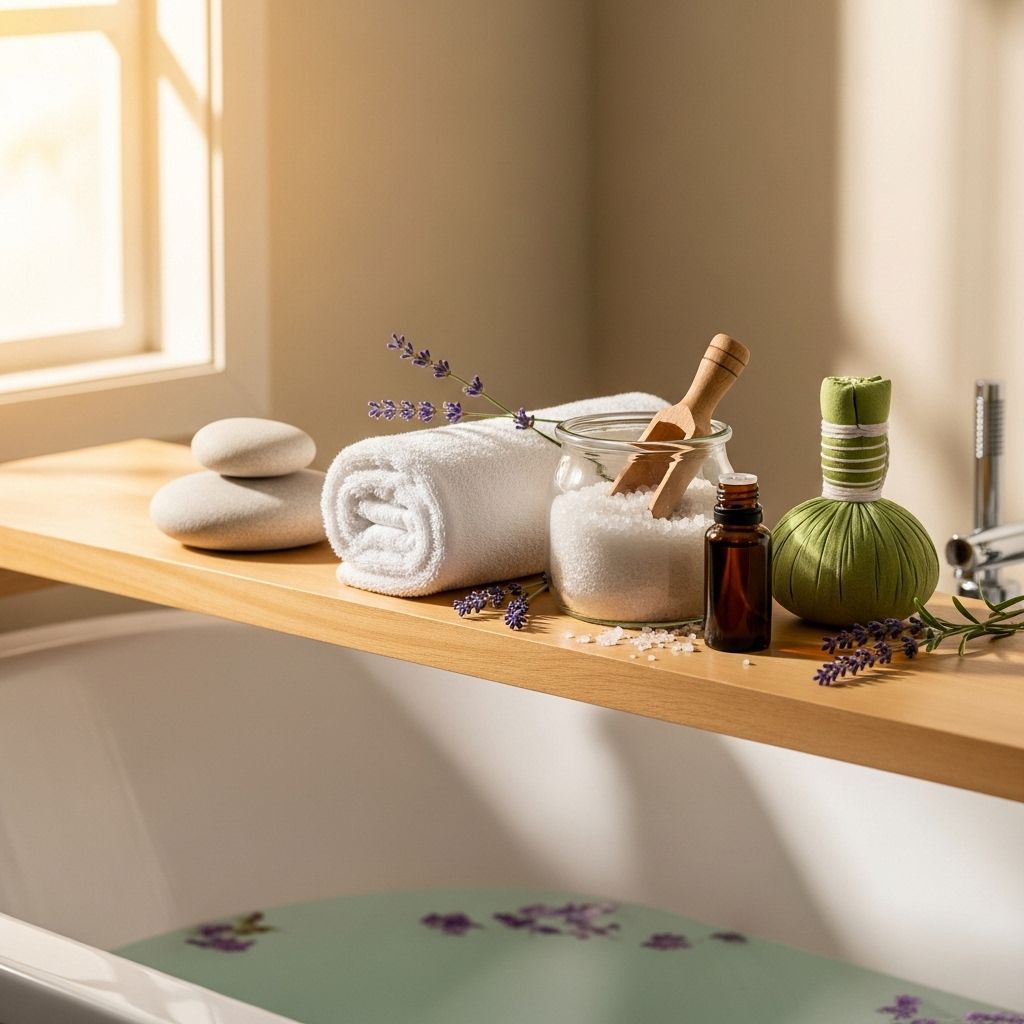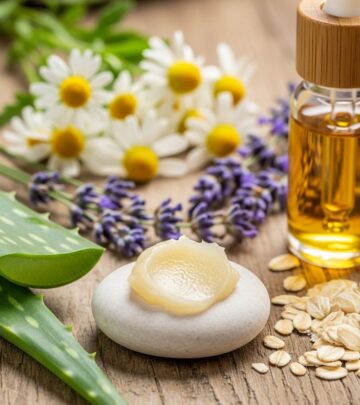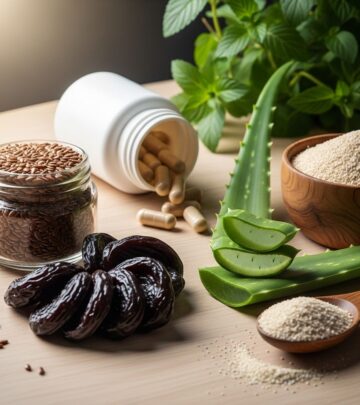5 Effective Home Remedies for Lower Back Pain Relief
Discover practical, proven strategies to relieve lower back pain and improve your daily wellbeing, right from home.

Understanding Lower Back Pain
Lower back pain is one of the most common health issues in the United States, with nearly 80% of Americans experiencing it at some point in their lives. This widespread problem can affect anyone, regardless of age, and often disrupts daily life, limiting movement and productivity. Awareness of the underlying causes and available home remedies can empower individuals to better manage and prevent lower back pain.
Common Causes of Lower Back Pain
Numerous factors contribute to lower back pain, ranging from everyday activities to underlying medical conditions. Understanding these causes is essential to effectively address the problem and reduce the risk of recurrence.
- Poor posture: Sitting, standing, or moving with improper alignment strains the lower back.
- Herniated discs: Spinal discs degrade with age, leading to pain and discomfort.
- Physical activities: Lifting heavy objects or prolonged standing can stress the spine.
- Underlying medical conditions: Issues such as diabetes, arthritis, osteoporosis, spinal stenosis, and spondylolisthesis may cause chronic pain.
5 Proven Home Remedies for Lower Back Pain
While chronic or severe pain should always be evaluated by a healthcare professional, many people can find relief through simple, effective home remedies. These strategies not only help alleviate discomfort but may also prevent future episodes of pain.
1. Heat Therapy
Heat therapy is highly beneficial for chronic lower back pain. Applying a heating pad, hot pack, or taking warm baths can relax tightened muscles, improve blood flow, and promote healing. Moist heat—such as showers or warm towels—is often more effective than dry heat.
- Use a heating pad set to low or medium for 15–20 minutes at a time.
- Moist heat (e.g., soaking in a warm bath) helps relieve muscle tension.
- Always use caution to avoid burns. Don’t leave heat sources on overnight.
Heat therapy is best for chronic conditions rather than acute injuries. Increased blood flow helps relax stiff muscles and reduce discomfort.
2. Cold Therapy
Cold therapy is recommended for recent injuries, swelling, or inflammation. Applying an ice pack or cold compress slows blood flow to the area, reducing swelling and numbing pain.
- Apply a cold pack (wrapped in cloth) for 15–20 minutes.
- Use cold therapy for the first 24–48 hours after injury.
- Always seek medical evaluation after trauma or severe pain.
Cold therapy provides temporary relief but should not replace professional treatment, especially in the case of ongoing or severe symptoms.
3. Regular Exercise & Stretching
Engaging in regular exercise and targeted stretching greatly benefits those with lower back pain. Contrary to the instinct to rest, activating muscles improves strength, flexibility, and circulation, which supports spinal health.
- Strengthening core muscles: Strong abdominal and back muscles stabilize the spine and reduce strain.
- Gentle stretching: Reduces stiffness, increases flexibility, and relieves pain.
- Yoga: Combines stretching, strengthening, and relaxation techniques to help manage pain.
Even simple movements, such as walking or performing specific stretches, can make a significant difference. Below are examples of stretches that can ease lower back discomfort:
- Kneeling lunge: Stretches hip and thigh muscles. Kneel, place one leg forward, and gently lean to stretch.
- Child’s pose (Yoga): Kneel, sit back on your legs, and stretch arms forward on the floor.
It is important to start slowly and consult with a medical professional before engaging in new exercise routines, especially when recovering from injury.
4. Wear Supportive Shoes
Footwear plays a significant role in spinal alignment. High heels and unsupportive flip-flops can disrupt posture and increase lower back pain.
- Choose shoes with good arch support, proper cushioning, and stability.
- Avoid high heels and flat, non-supportive shoes for daily wear.
- Use orthotic inserts if you have arch or pronation issues.
Supportive footwear helps maintain spinal alignment and prevents cumulative stress that leads to pain, especially for those who walk or stand for extended periods.
5. Upgrade Your Mattress
Many people overlook the impact of their mattress on spinal health. An old or unsuitable mattress may fail to support the back, compounding pain over time.
- Research and select a mattress that matches your sleeping position and support needs.
- Replace mattresses that are more than 7–10 years old, especially if waking up with aches.
- Consider firmness and comfort: The optimal mattress varies according to whether you sleep on your back, side, or stomach.
Proper sleep support ensures that the spine remains in a neutral position, reducing pain and improving quality of rest.
Additional Tips & Lifestyle Modifications
Beyond the five main remedies, certain lifestyle changes further support lower back health and help prevent future pain episodes. These habits can be easily incorporated into your daily routine:
- Maintain good posture: Keep shoulders back, abdominal muscles engaged, and avoid slouching while sitting or standing.[10]
- Practice mindful movement: Use correct form when lifting heavy objects; bend at the knees, not the waist.
- Regular movement: Prolonged sitting can strain the back. Take hourly breaks to stand up, stretch, or walk around.
- Manage stress: Mindfulness and relaxation techniques can reduce muscle tension related to psychological stress.
- Healthy weight: Maintaining a healthy body weight through balanced nutrition and exercise takes pressure off the spine.
When to Seek Professional Help
While most mild to moderate lower back pain can be improved with home care, chronic or severe symptoms warrant professional evaluation. Consult a healthcare provider if you experience:
- Pain lasting more than a few weeks
- Severe pain disrupting sleep or daily activities
- Numbness, tingling, or weakness in the legs
- Fever, unexplained weight loss, or bowel/bladder changes
Your medical history and underlying conditions influence the best treatment approach. Tailored interventions may include physical therapy, medication, or further diagnostic workup.
Frequently Asked Questions (FAQs)
Q: Can lower back pain be prevented through lifestyle changes?
A: Yes. Practicing good posture, maintaining healthy weight and regular exercise can prevent or reduce your risk of lower back pain.
Q: Is exercise safe if I am already in pain?
A: Gentle movement and physical activity typically help relieve lower back pain. Avoid strenuous workouts and consult a professional before starting any new exercise program.
Q: What type of mattress is best for back support?
A: Mattress firmness should match your body type and sleeping position. Medium-firm mattresses often provide balanced support, but individual needs vary.
Q: How long should I use heat or cold therapy?
A: Use either therapy for 15–20 minutes at a time, no more than several times per day. Monitor your skin to prevent burns or frostbite.
Q: Can footwear really affect my back pain?
A: Absolutely. Shoes with proper support and cushioning maintain spinal alignment and reduce long-term discomfort.
Quick – Reference Table: Home Remedies & Their Benefits
| Remedy | Main Benefit | When to Use |
|---|---|---|
| Heat Therapy | Relaxes muscles, improves circulation | Chronic pain, muscle stiffness |
| Cold Therapy | Reduces swelling, numbs pain | Acute injuries, initial pain onset |
| Exercise & Stretching | Strengthens muscles, increases flexibility | Ongoing maintenance, recovery phase |
| Supportive Shoes | Improves alignment, reduces strain | Daily activities, walking or standing |
| Better Mattress | Supports spine overnight, reduces pain | Sleep routine, chronic pain |
Summary: Take Control of Your Back Health
Lower back pain affects millions—but relief is often in reach through practical, accessible remedies. By understanding the underlying causes and embracing simple lifestyle changes, such as heat/cold therapy, tailored exercise, supportive footwear, and choosing a suitable mattress, most people can manage symptoms and improve quality of life. Remember: Always seek medical advice for persistent pain, and don’t ignore signs of serious conditions.
References
- https://www.webmd.com/back-pain/what-helps-with-lower-back-pain
- https://orthotoc.com/lower-back-pain-relief/
- https://orthotoc.com/home-remedies-lower-back-pain/
- https://www.sciatica.com/blog/everyday-home-remedies-for-back-pain/
- https://orthotoc.com/home-remedies-for-hip-pain/
- https://pmc.ncbi.nlm.nih.gov/articles/PMC9529058/
- https://pmc.ncbi.nlm.nih.gov/articles/PMC8299916/
- https://health.ucdavis.edu/blog/cultivating-health/8-tips-to-help-ease-your-back-pain/2022/06
- https://resources.healthgrades.com/right-care/back-pain/back-pain-remedies-lower
- https://www.health.harvard.edu/pain/where-to-turn-for-low-back-pain-relief
Read full bio of medha deb












